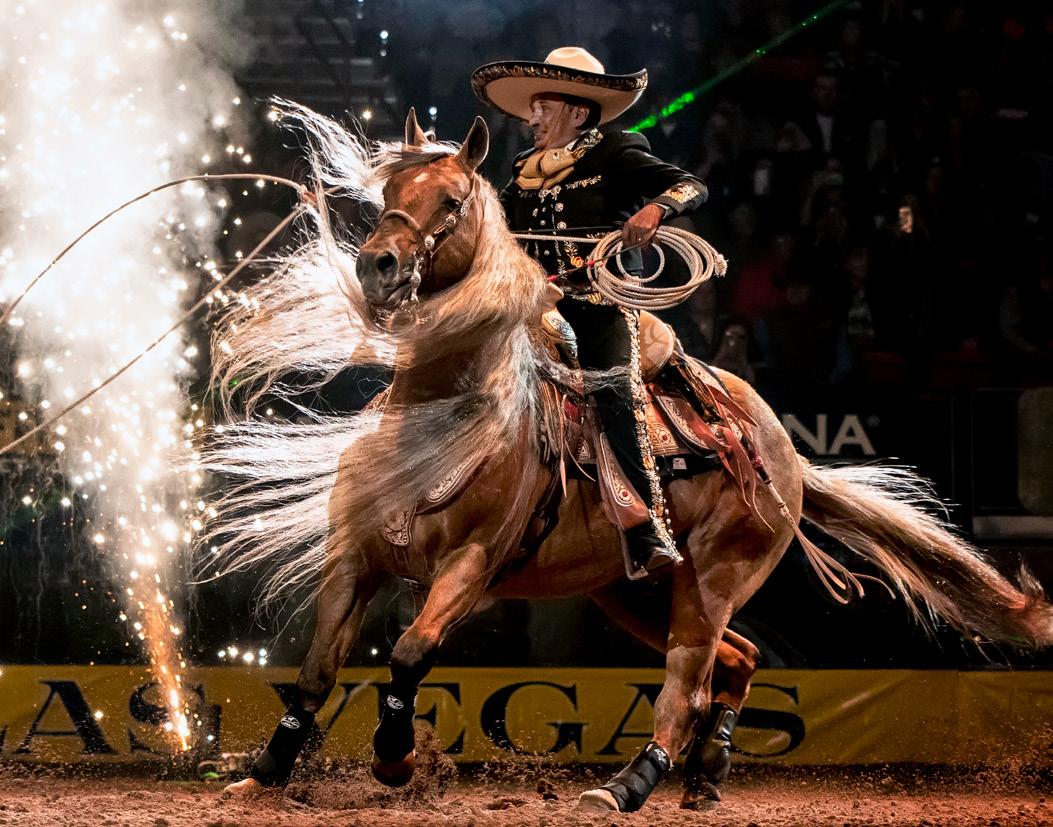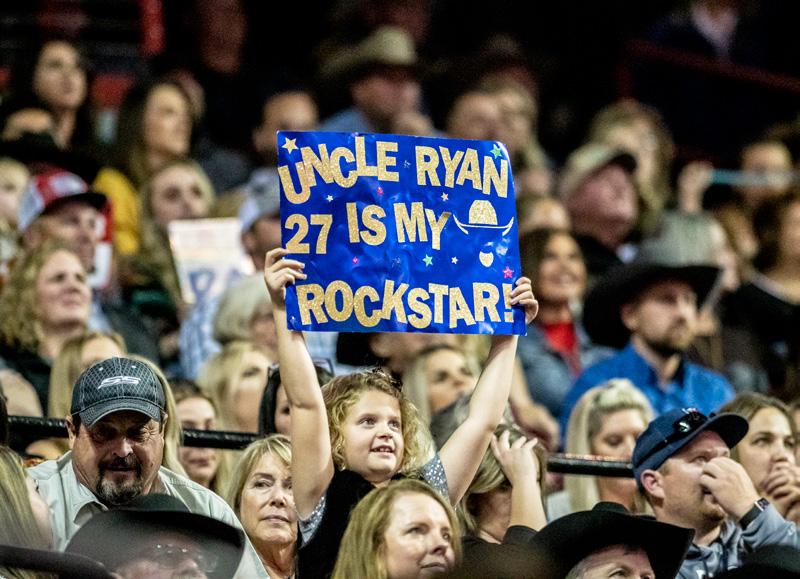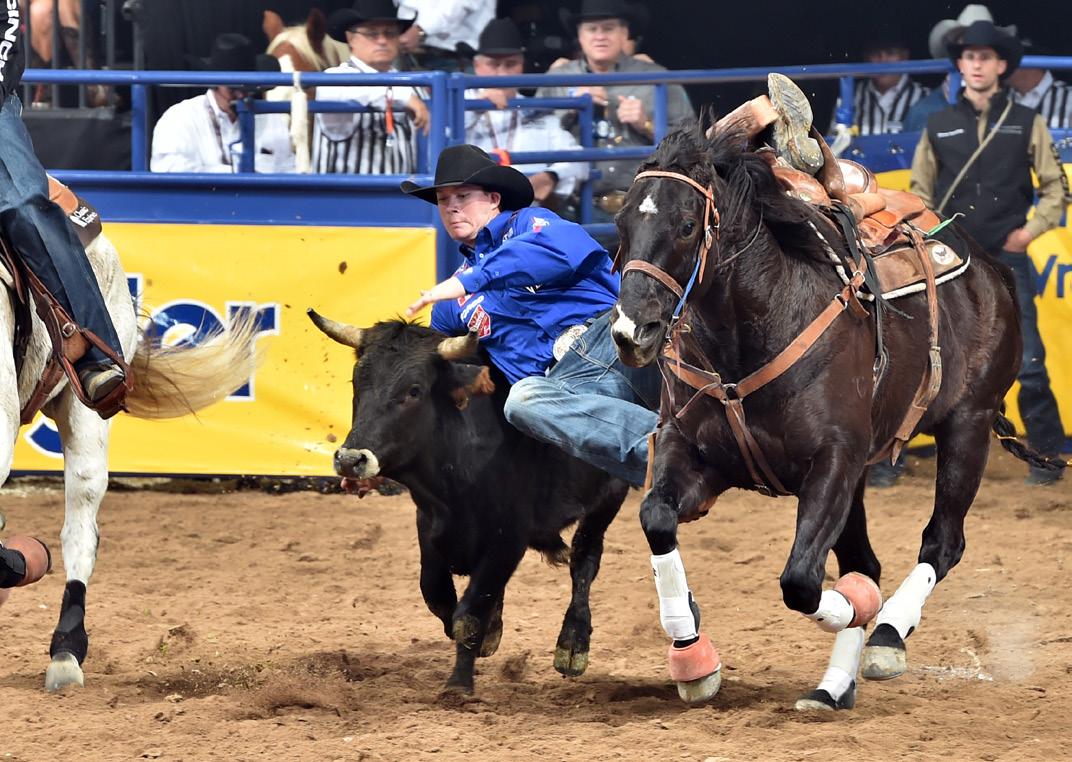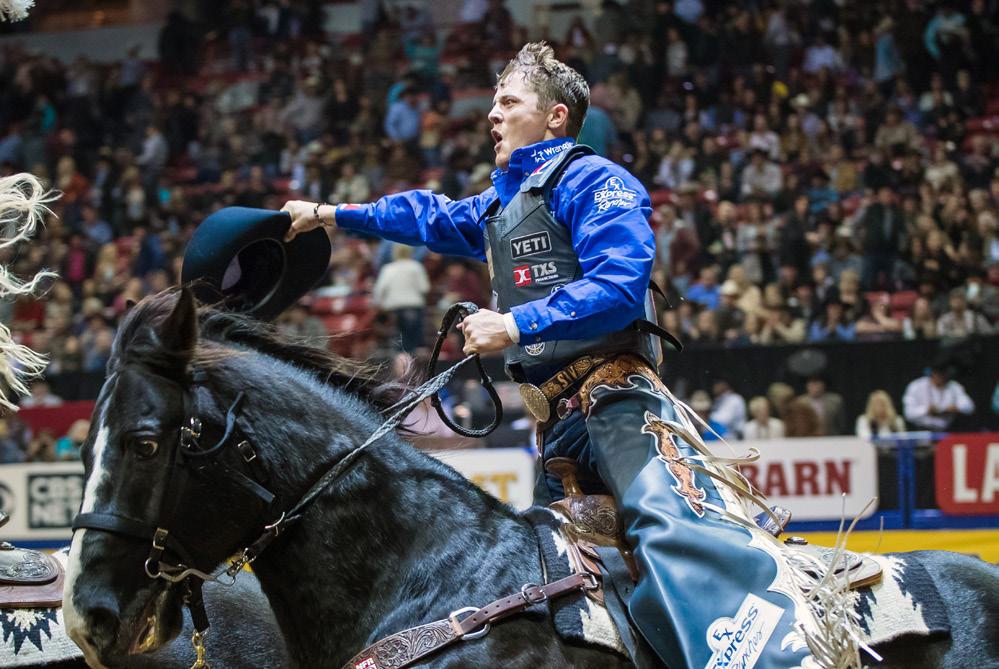
6 minute read
COWBOYS Never Quit
Rebuilding Rodeo in the Wake of COVID-19
Photo: Steve F. Gray
Photo: Andy Watson / bullstockmedia.com
Though it feels like it’s been a lifetime since news outlets began reporting on the emergence of COVID-19, it was only a few short months ago that the pandemic began to take its toll on the US.
Americans’ lives changed suddenly and dramatically. Thousands of people across the country fell ill, and many found themselves mourning the passing of their loved ones. Meanwhile, shutdowns, shelter-in-place orders and social distancing guidelines became a reality of daily life.

Like many American industries, the rodeo business suffered amid the economic turmoil. Social distancing meant crowds could no longer gather to support their favorite cowboys. Both the PRCA and the PBR made the tough call to cancel or postpone events for the foreseeable future. In turn, the riders and the behind-the-scenes team members that support the rodeo industry found themselves out of work.
But if there’s one thing people in the rodeo business know, it’s that if a bull bucks you off, the best thing you can do is get back on it and try again.
At its core, rodeo is an industry built on resilience, comebacks and hard-earned successes. In reflecting on the impact of the COVID-19 crisis, people can easily find themselves caught up in the negative news cycle that fosters anxiety and uncertainty. However, given that modern rodeo is rooted in a history of more than 140 years of roping, riding and romping, one thing is evident: It’s going to take much more than a virus to bring the industry to a halt.
Essential Businesses are the Lifeblood of the Rodeo Industry

In the wake of the coronavirus outbreak and the resulting economic slowdown, many people will doubtlessly experience major financial struggles. It’s possible concerns about money will prevent people from being able to travel great distances to partake in rodeo events. Certainly, ticket sales and on-site vendors that typically drive a large portion of rodeo revenues will take a hit.
However, the rodeo industry may be in a unique position to bounce back in a meaningful way. While there’s no doubt the rodeo attracts all types of people, essential businesses are inherently ingrained in the rodeo community. Even in its darkest times, the nation still needs Western staples such as agriculture, ranching, petroleum and a host of other products and services that are integral for maintaining US supply chains.
Right now, the corporate sponsors that support sports organizations like the NHL and the NBA are scrambling to figure out how to proceed. Many of these companies are facing tremendous financial losses due to rapid changes in consumer spending habits. But while consumer brands that sell nonessential products are suffering, essential businesses continue to function.
Some business owners’ fondness for rodeo dates back generations. Their support for rodeo is an investment in the culture, and that’s something they’re not ready to abandon. These essential businesses that form rodeo’s backbone will get the industry through its most trying time.
It’s likely industry leaders will have to make concessions to adapt to the realities of the situation. That could mean temporarily scaling back the festivities surrounding major events or providing more direct support for presently out-ofwork riders and ropers. Regardless of how they choose to proceed, their continued support will be the key to pushing the industry to new heights. Photo: Steve F Gray
Photo: Dan Hubbell

The Economy of Rodeo Entertainment

Throughout World War II, sports such as baseball and boxing remained active and popular as the government thought such events would be good for public morale. There’s nothing quite like witnessing a last-second winning field goal or a watching favorite player hit an epic grand slam. Regardless of whether Americans are in the midst of an economic boom or a major depression, people crave sports entertainment. As the economy stabilizes, professional sports will be one of the first areas of the entertainment industry to pick up steam.
Nowhere is Americans’ love of sport more evident than the rodeo. The heart-racing, blood-pumping action puts seasoned pros against rookies, veteran riders against fearless underdogs and world-class stars against local legends. It’s precisely this spirit that illustrates why rodeo will quickly recover as a form of entertainment for the masses.
On any given day at the rodeo, fans may find themselves spectating a ride of a lifetime or a devastating, career-ending upset. It’s a surreal experience to watch a cowboy ride a bull, knowing the next eight short seconds can make or break that person’s career. In a time of international struggle, the exhilaration and excitement of the rodeo will undoubtedly serve to bolster peoples’ spirits.
Even if coronavirus precautions prevent large crowds, the show can still go on with the riders, a few key industry experts and a video production crew. Fans may not be able to attend in person, but they can still watch and support their favorite riders from afar until life resumes as normal. Further, new broadcast opportunities will mean rodeo has the potential to reach a bigger crowd than ever before.
Rodeos, Riders and Resilience: Bouncing Back, Better than Before The Bottom Line
Localities will start to lift restrictions slowly and cautiously. As crowds return to the rodeo, this may mean planning to limit events to regions with limited numbers of COVID-19 cases. Riders and others who play pivotal roles within the rodeo industry may be subject to virus testing prior to their participation. As has always been the case with rodeo, safety will remain a primary goal.
It’s hard to know exactly what happens next. Perhaps the slowdown is a chance to reflect on the aspects of the industry that are overdue for change. Industry leaders can look to this downtime to discover new opportunities. Just as people in numerous ancillary industries quickly discovered both the conveniences and the challenges of remote work, social distancing can inspire more technology-heavy approaches that lead to growth within the rodeo ecosystem.
Unfortunately, rodeo won’t suddenly return at full tilt. More likely, a return to normalcy will be gradual. Some aspects of the industry may never be the same as companies look to revitalize the rodeo in a way it can reconcile with an economy in recovery.
Next year’s rodeo industry may look a little bit different than the one fans saw at the start of this year. There may be new marquee sponsors, more emphasis on broadcast events and more opportunities for fans to support riders via direct donations.
But as things change, the relentless spirit of rodeo will continue to thrive.
Photo: Clay Guardipee


In spite of the challenges, it’s important to recognize that times of hardship often also present new opportunities. Perhaps this is a time to rethink some of the old ways of doing things. Just as a bull rider has to quickly adapt to the flow of each unique bull, the industry as a whole can adapt in the face of economic turmoil.
For all its challenges, the COVID-19 crisis also shows how communities come together in times of crisis. Piece by piece, the rodeo industry is poised to build something greater than it could have ever imagined. By working hand-in-hand with one another, rodeo supports and fans will gradually begin to realize a new future.
As long as there are cowboys, there will be rodeos. Because no matter how hard it gets, cowboys never quit. •


